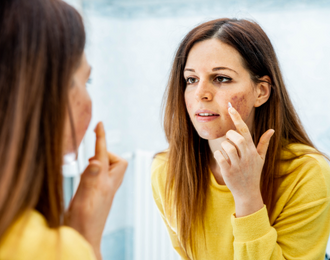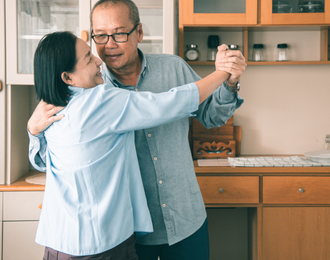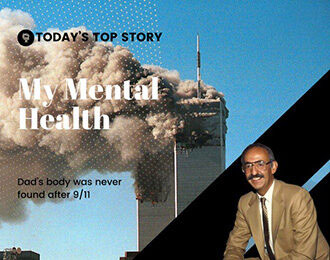Killed by a pill bought on social media: the counterfeit drugs poisoning US teens
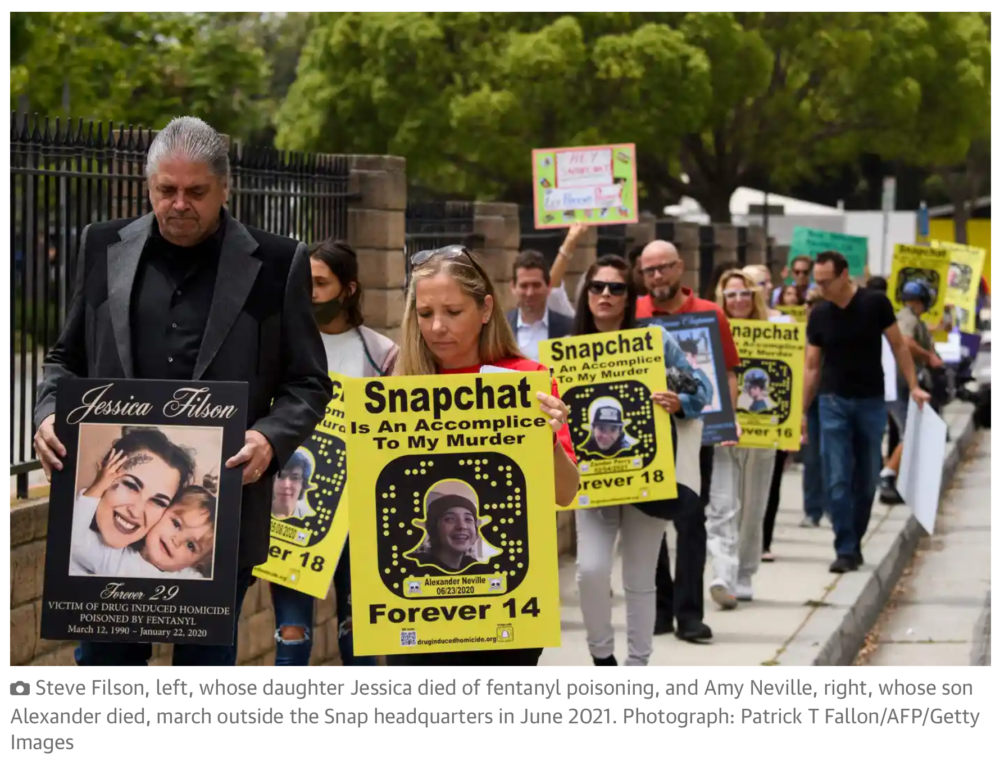
Accidental deaths soar among young people amid a proliferation of fentanyl-filled pharmaceuticals sold on platforms such as Snapchat and Instagram.
By Erin McCormick in San Francisco for the Guardian Updated January 2022
Fourteen-year-old Alondra Salinas had set out her new white sneakers and packed her backpack the night before the first day of in-person high school when police say she responded to an offer on Snapchat for blue pills, which turned out to be deadly fentanyl. Her mother couldn’t wake her the next morning.
Seventeen-year-old Zachary Didier was waiting to hear back on his college applications when a fake Percocet killed him. Sammy Berman Chapman, a 16-year-old straight-A student, died in his bedroom after taking what he thought was a single Xanax.
Their tragedies are part of an explosion of drug-related deaths among US high school and college-aged youth, fueled by what experts say is a flood of fentanyl-filled counterfeit pills being sold on social media and sometimes delivered straight to kids’ homes.
National statistics show a huge surge in drug-related deaths during the pandemic, with fatalities leaping to more than 93,000 in 2020, a 32% rise from 2019. But no group has seen a faster rise than youth under 24, according to a Guardian analysis of 2020 federal data. Among this age group, accidental drug deaths increased by 50% in a single year – taking 7,337 young lives in 2020. Experts say a large portion of this increase is due to the vast quantities of fentanyl streaming into the US.
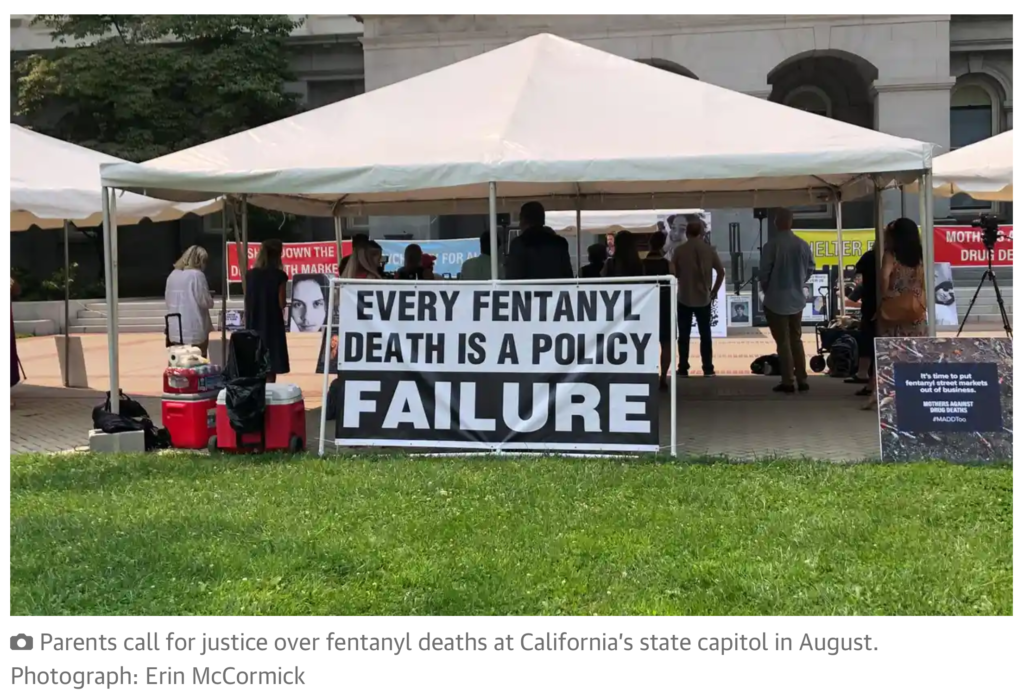
California, where fentanyl deaths were rare just five years ago, a young person under 24 is now dying every 12 hours, according to a Guardian analysis of state data through June 2021. That’s a 1,000% increase over 2018, according to data from the California department of public health’s drug overdose dashboard.
Fentanyl, a cheap, synthetic opioid up to 100 times more potent than heroin, is not only getting mixed with traditional street drugs such as heroin, cocaine, methamphetamine and marijuana, federal authorities say – it is being pressed into millions of pills that look exactly like traditional pharmaceuticals.
But the potency of counterfeit pills can vary dramatically. Federal agents seized nearly 10m counterfeit pills in the first three quarters of 2021 – more than the previous two years combined. And tests conducted on the pills showed that two out of five of the counterfeits contained enough fentanyl to kill, according to the Drug Enforcement Administration (DEA).
Meanwhile, experts say drug dealing has moved away from dark alleys and street corners and on to social media, enabling young people to buy what they think are Xanax, Percocet, or Oxycodone tablets from the privacy of their bedrooms.
“These are not overdoses; these are poisonings,” said Shabbir Safdar, director of the Partnership for Safe Medicines, a non-profit fighting pharmaceutical counterfeit. “Nobody dies from taking a Xanax; nobody dies from taking a single Percocet. These are fake pills.”
The author Sam Quinones, who follows the rise of fentanyl in his book The Least of Us: True Tales of America and Hope in the Time of Fentanyl and Meth, says the staggering quantities flooding into the country means “the days of recreational drug use are over”.
“Every drug you try now is a game of Russian roulette.”
‘It was one pill’
Ed Byrne is tired of looking at dead bodies. Byrne, a special agent for the investigations unit of the US Department of Homeland Security, works in cooperation with the DEA and local law enforcement agencies on a San Diego task force that focuses solely on fentanyl deaths.
In the team’s first year, 2018, there were 92 fentanyl deaths in San Diego County; this year, Byrne said, the county was on track to respond to more than 810. Sometimes he is called out to respond to multiple deaths a day.
“This stuff doesn’t discriminate,” Byrne said. “We go and deal with a dead person who’s homeless. Then we get another call and we’re in a house that’s worth $12m and that person’s dead from the same drug.”
On the morning of 23 June 2020, it all became personal. Byrne’s partner called him to say her 14-year-old nephew, Alexander Neville, had been found unconscious in his bedroom 40 minutes away in Orange County. Byrne and his partner jumped in their cars, but it was too late.
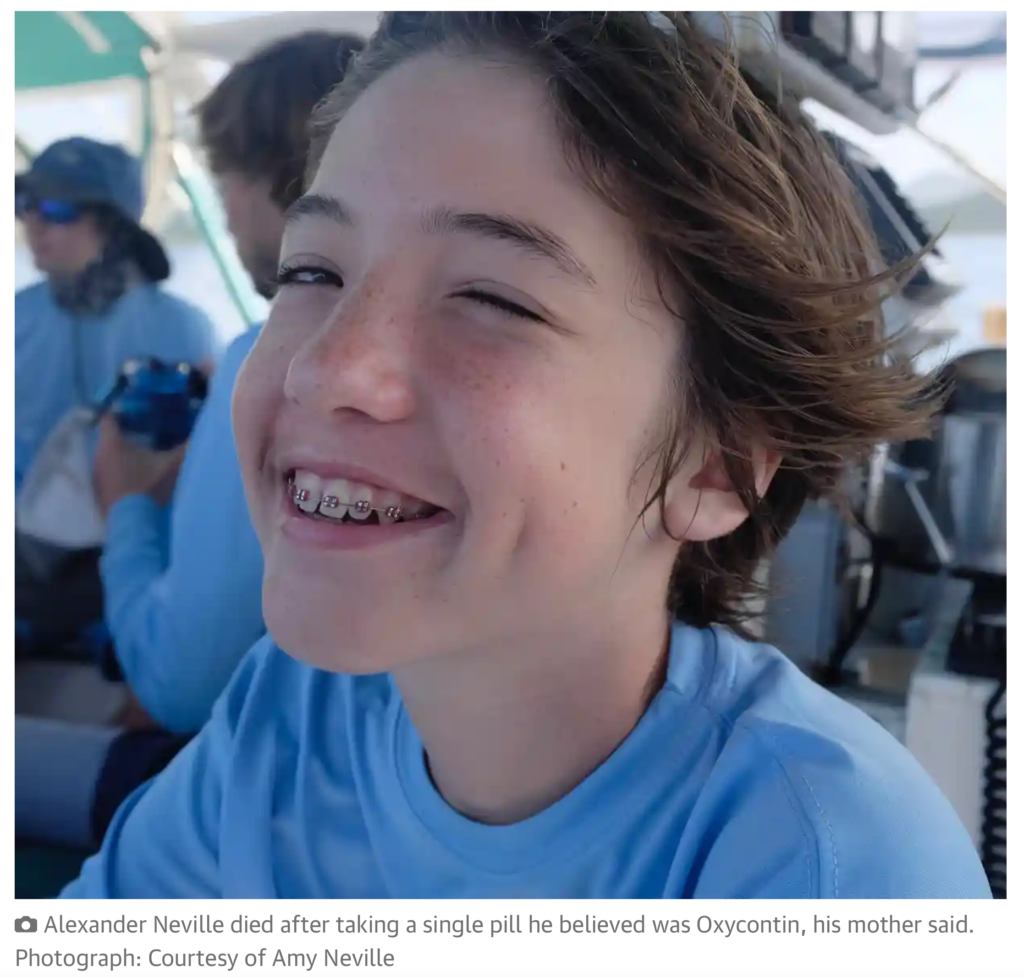
Amy Neville, Alexander’s mother, said she had felt something was very off as soon as she went to her son’s room that morning.
“I knocked on his door and, as soon as I touched the door, I knew something was wrong,” said the mother. “There was no energy there, it was like a weird feeling. I knocked on the door and he didn’t respond.”
The family had already been struggling to get Alexander to stop using marijuana and vaping. Just a day earlier, they’d made a plan to get him into treatment, because he’d admitted he had been taking pills and said that he wanted help. But he never got the chance.
“Alex had taken one pill that he thought was Oxycontin – one pill. I had no idea that one pill would kill him,” said his mother. “He had ordered an illegally manufactured pill right off of social media as easily as ordering a pizza.”
Law enforcement and other experts agree that buying illicit pills has never been easier. Dealers have moved from the dark web to openly selling what they label as Oxycontin, Percocet, Xanax, or Adderall on platforms like Snapchat, Instagram, and Craigslist. A report released in December by the Tech Transparency Project (TTP) found that Instagram offers an instant “drug pipeline” for kids, making it possible for them to find Xanax, ecstasy, and opioids in just a few clicks.
The easy accessibility of fentanyl “is a subterranean crisis that is about to explode”, said Dr Daniel Ciccarone, a professor specializing in addiction medicine at the University of California, San Francisco. “This is a much bigger problem than we appreciate: it’s an underground volcano.”
Perla Mendoza believes it was a dealer on Snapchat who sold a fake Xanax that killed her son, 20-year-old Daniel Elijah Figueroa, on 16 September last year.

Figueroa had been staying with his grandmother while waiting for community college to start. He had a bottle of 15 pills delivered to her house in Long Beach after complaining that he couldn’t sleep, Mendoza said.
After his body was found by his bed in his grandmother’s home in a kneeling position that looked almost like a prayer pose, his family found the pharmaceutical bottle. Only one pill was missing.
Mendoza shared with the Guardian screenshots of the Snapchat account where she believes her son got the fatal pills. In them, an advertiser offers free delivery of “Oxy” in Orange County. “Hit my line, doing hella deals the rest of this week,” one post reads.

“It was one deadly pill that was strong enough to kill four adults,” said Mendoza, who hopes that other parents will get a chance to warn their children before it’s too late. “I feel like a lot of parents are like: ‘My kids aren’t into that.’ Well, neither was mine,” she said. “But that’s what kids are getting.”
A push for accountability
In August of this year, Neville and dozens of other parents of fentanyl victims lined up giant placards with photos of their lost children along the grand steps of the California state capitol. There were posters of kids in their school pictures, kids still in braces, kids giving the thumbs up on family beach trips.
The parents gave speeches, pleading for measures to prevent drug dealing on social media, more prosecutions of drug importers and better mental health treatment for troubled teens. Mostly, they just called on state legislators to do something to stop more kids from dying.
“We should be packing our son up for college right now and that is not happening for one reason: fentanyl,” said Laura Didier over a portable microphone. Her son, Zachary Didier, a talented musician who loved the cartoon character Snoopy and trained his own dog to sing while he accompanied him on the piano, died at age 17.
Didier was set to be one of the valedictorians of his high school class. But on the morning of 27 December 2020, his dad found him slumped over his desk after taking one pill labelled as Percocet that he obtained on Snapchat.
“He thought he was experimenting with a pharmaceutical-grade drug,” said his mom. “We are losing our kids and all they are doing is experimenting. Fentanyl doesn’t even give them a chance.”
Jaime Puerta, who found his 16-year-old son Daniel Puerta-Johnson unconscious in his southern California home in April 2020, has helped parents organize protests outside the offices of Snapchat and on the streets of San Francisco, pushing for more action from social media sites, law enforcement and state regulators.
“When I found him dead in his bed, I swore to myself I would do something,” he said. “I’m tired of waking up every day and hearing that a new child is dead.”
Social media companies are now being forced to confront the deadly role their platforms can play. At a congressional hearing this month, lawmakers grilled the head of Instagram, Adam Mosseri, about young people’s easy access to drugs.
“Why are children’s accounts even allowed to search for drug content to begin with, much less allowed to do so in a way that leads them to a drug dealer in two clicks?” asked the Republican senator Mike Lee of Utah, referencing the Tech Transparency Project (TTP)’s report.
“Accounts selling drugs, or any other regulated goods are not allowed on the platform,” said Mosseri. “Apparently they are,” interjected Lee.

In a statement to the Guardian, Jeanne Moran, a spokesperson for Meta, which owns Instagram, said the company takes down a huge number of drug-related posts and has “developed technology to find and remove this content proactively”.
Moran cited company metrics showing “out of every 10,000 views of content on Instagram, we estimate no more than 5 of those views contained content that violated the policy (on legally-regulated goods)”.
Jennifer Park Stout, vice-president of global public policy at Snap, said in an October Senate hearing that Snapchat had dramatically increased its efforts and was “absolutely determined to remove all drug dealers” from its site. She said the company had “deployed proactive detection measures” to remove drug dealers, but “they are constantly evading our tactics”.
“What is happening on our platforms – and all across social media and technology platforms – is that young people who are suffering from mental health and stress induced by the pandemic … are reaching for substances, oftentimes pills and opioids,” she said. “But these substances are laced with fentanyl, enough fentanyl to kill them.”
Eric Feinberg, vice-president for content moderation at the non-profit watchdog group Coalition for a Safer Web, said dealers were churning out new accounts faster than technology companies could take them down. Feinberg runs regular social media surveillance looking for drug sales online and says dealers often operate with little fear of getting caught.
Feinberg says that, once he signed up to follow a few drug sellers’ sites, social media algorithms began recommending more drug dealers for him to follow, in a phenomenon called algorithmic amplification.
For example, after he followed some drug-related accounts on Instagram, Feinberg said, a dealer began following him out of the blue and barraging him with offers. Screenshots shared with the Guardian show the dealer flogging “pain pills, anxiety meds and other chemical research products” and urging him to make an order for delivery through the US mail.
“It’s extremely easy to find this stuff,” said Feinberg. “In fact, the algorithms push this at you.”
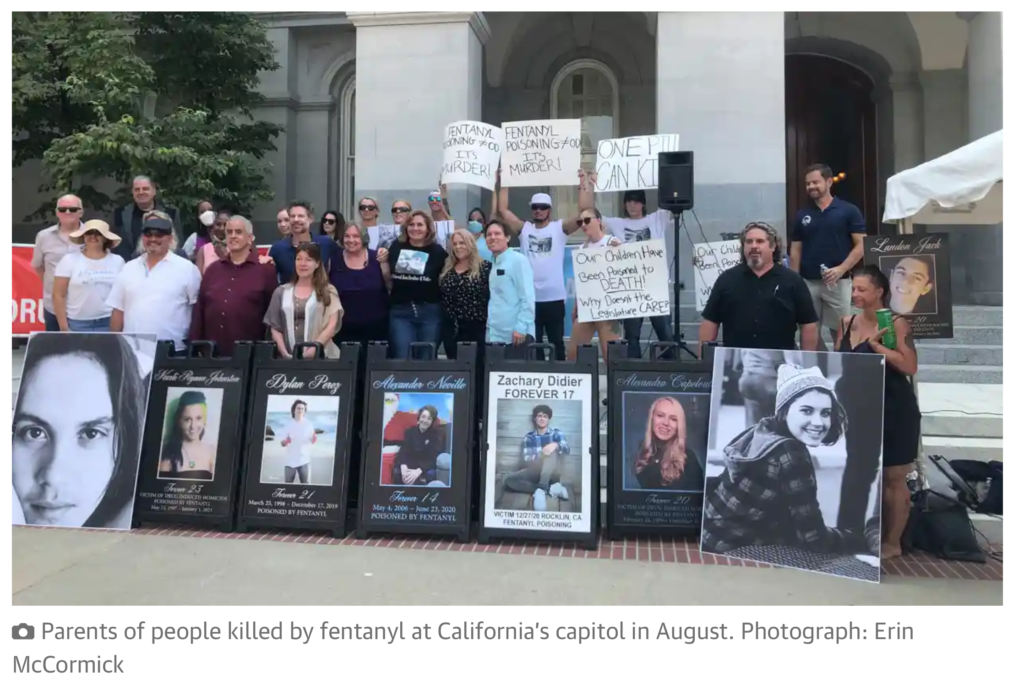
In October’s Senate hearing, Senator Amy Klobuchar commented that if social media companies were held legally liable for deaths due to drugs sold on their platforms, they might find faster ways to respond to the crisis. But the companies have long held that, as technology platforms, they are not legally accountable for content posted on their sites.
“If a kid had just walked into, say, a pharmacy, they wouldn’t be able to get this,” said Klobuchar to Snap’s vice-president. “But, in this case, they can get on your platform and just find a way to buy it. That is the problem.”
In a statement to the Guardian, Kelsey Donohue, a spokesperson for Snap, said the company was “determined to do our part to eradicate drug sales on Snapchat”. Donohue listed several steps Snap has taken, including raising awareness of counterfeit pills directly in the app, using machine learning to proactively detect drug-related content, and working with law enforcement and other experts.
“We constantly evaluate where we can keep strengthening our work to combat this illegal activity,” Donohue said.
For now, with dangers running so high, Safdar says the best thing parents and educators can do is talk to children about the deadly new stakes experimenting with drugs.
“The current generation has to learn that a pill that didn’t come from a pharmacy or a hospital can’t be trusted and might be a life-ending event,” he said. “Unfortunately, they’re learning it by losing their colleagues.”
